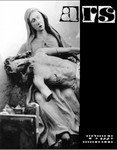
Časopis ARS 38 (2005) 2
Dana BOŘUTOVÁ
Hľadanie pevného bodu: K problematike uplatnenia historických vzorov v architektonickom koncepte Blažeja Bullu[Searching for a Fixed Point: Implementation of Historic Patterns in the Architectural Work of Blažej Bulla]
(Resumé)
The study deals with work of the Slovak architect Blažej (Felix) Bulla (1852 – 1919). Peripetia of professional and private life of the architect who gained his training (1876) and first practical experiences in Prague, and, in 1878, returned to Slovakia, to run his architectural studio first in Ružomberok and later (since 1883) in Martin, are eloquently illustrative of his times: Although the status of an architect, who intentionally chose to develop his activity in the provincial milieu, and extensively participated also in manifold cultural activities of the Slovaks, was considerably differing from working conditions of architects working in Budapest, then the dynamically developing center of Hungarian architecture, close view of Bulla’s work unveils deep links with the contemporary development of architecture.
In humble conditions of the small provincial city, Bulla‘s activity encountering in the course of 16 years (1878 – 1894) more than 150 designs, was mostly limited to private, predominantly domestic, structures of modest dimensions, diverse reconstructions and refurbishments, as well as designs of furniture and interior decorations. These limits were exceeded by a number of churches and public buildings. Regarding the style, the architecture of Bulla represents a figure typical for the era of architectural pluralism. The style preferences were determined by the characteristics of the given building type or by personal preferences of the investor, eventually of the architect himself. The study is divided into parts, devoted to certain aspects of Bulla‘s activity, aiming at analysis of selected works and at assigning of their correlations in frames of the contemporary discourse. The part entitled Blažej Bulla and architectural pluralism concerns on the architect‘s training and the background of his creativity, problems of reflecting possible sources of inspiration, patterns and procedures in context and closer circumstances, and observing, on the background of archive documents, the points of departure and crystallization of the stand-points and attitudes present in the architects later works.
The part entitled Blažej Bulla and the Neorenaissance contains an analysis of selected examples representing the style in Bulla’s work, examinates the typical motifs, compositional patterns and their variations as documented in buildings of the County Hall (1880), the Rest-house (1880) or the Gymnasium in Dolný Kubín (1888 - 1889), House Matyuga-Obtulovič in Trstená (1882), Bulla‘s own house in Martin (1889), and the National House in Martin (1888). The part entitled Blažej Bulla and the Gothic Revival deals with sources and broader context of the neo-Gothic religious architecture as well as with influence of the so-called Rundbogenstil, and aims to outline closer correspondences between those trends and Bulla‘s designs for the Evangelic church in Dolný Kubín (1882, executed 1892 – 1893) and the Church in Kráľova Lehota (1881).
The part entitled Blažej Bulla and the Slovak Style describes the ideational, political, social, cultural and architectural relations of the architect’s inspiration with the Carpathian wooden architecture, intending to specify in a more complex way his motivation in this special aspect of Bulla’s architectural activity. The well-known tower-gate built on the occasion of folk embroidery exhibition in Martin (1887) is reasonably considered to represent an early specimen of the „Slovak style“ and an impulse efficiently worked out by the younger architect Dušan Jurkovič. This temporary wooden structure represented by no way a singular case in Bulla’s work – this can be witnessed by numerous designs and sketches in the architect‘s bequest (kept in the Slovak National Museum of Literature in Martin). Among these – along with a number of villas – the most interesting are the designs for a theatre building possibly representing alternatives to designs for the National House in Martin (1888). The date of their origin, 1887 – 1887, precedes the better known creations by Stanisław Witkiewicz in Zakopane (coming from the 1890s) as well as the so-called Czech Cottage built by J. Koula and A. Wiehl in 1891 for the Jubilee Exhibition in Prague.
In the Conclusion, the author of the study considers the above- specified correlations and aspects of Bulla’s architectural work to be asking for revision of former assessments: Despite the (mostly economical) limitation by the „small“ provincial conditions, the architect in a number of his concepts approved the capacity to follow, in close adherence, the great movements of European architecture as well as to absorb and specifically transform their impulses. Bulla’s work thus presents an example of architectural concept, in many ways characteristic of the situation in our region and, at the same time, illustrating the deep connections of the regional Central-European architecture, even on its „peripheral“ level, with the ideas of the international scene.